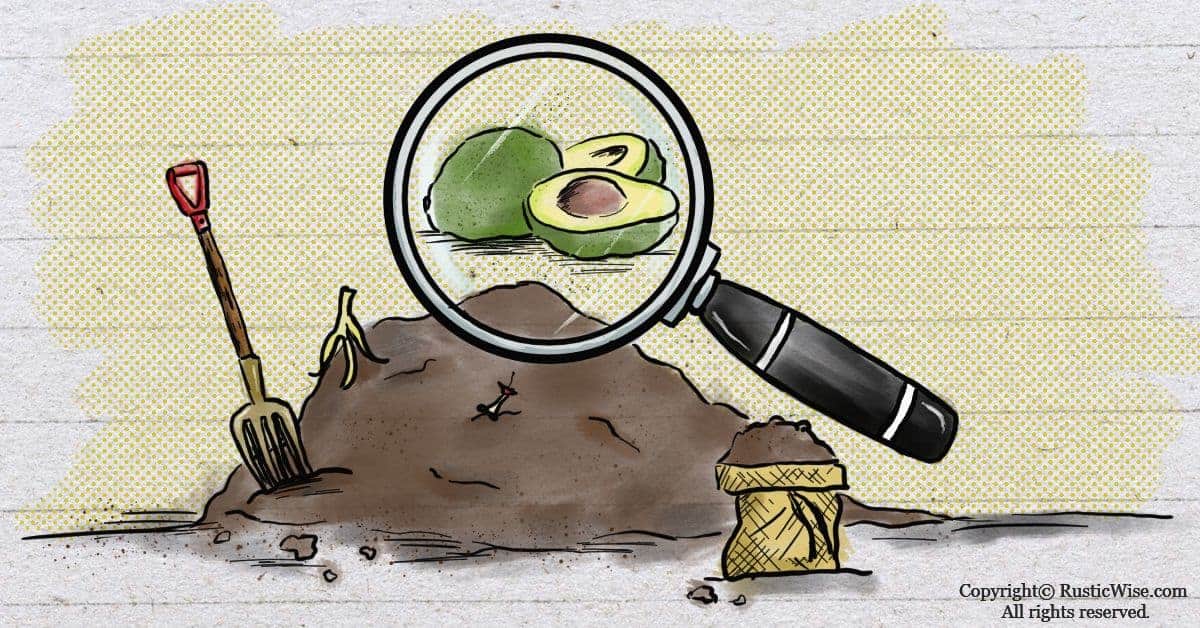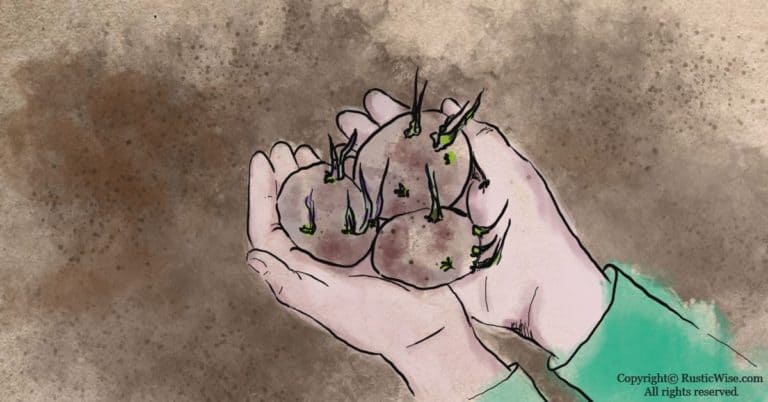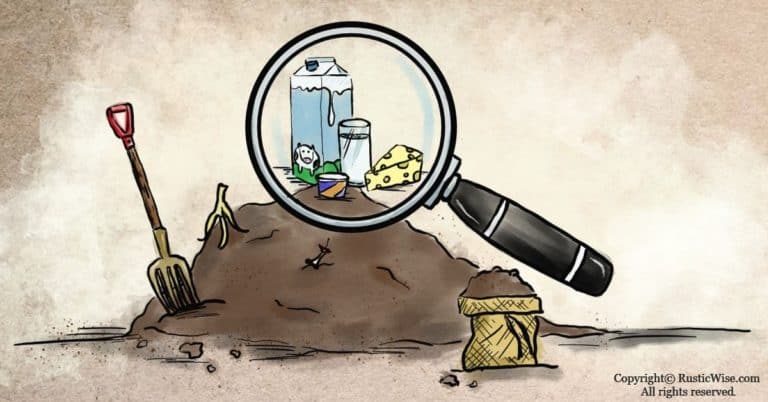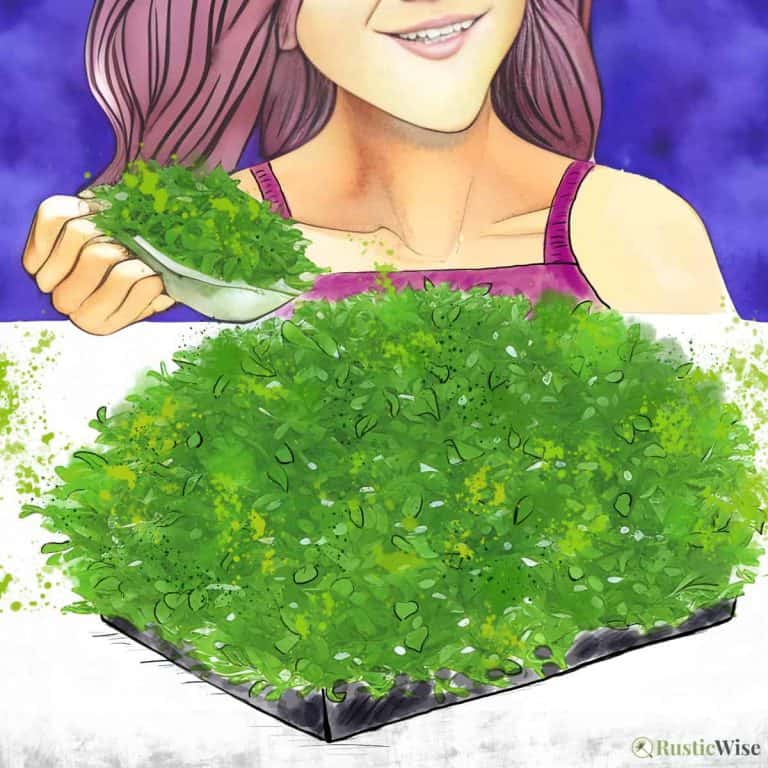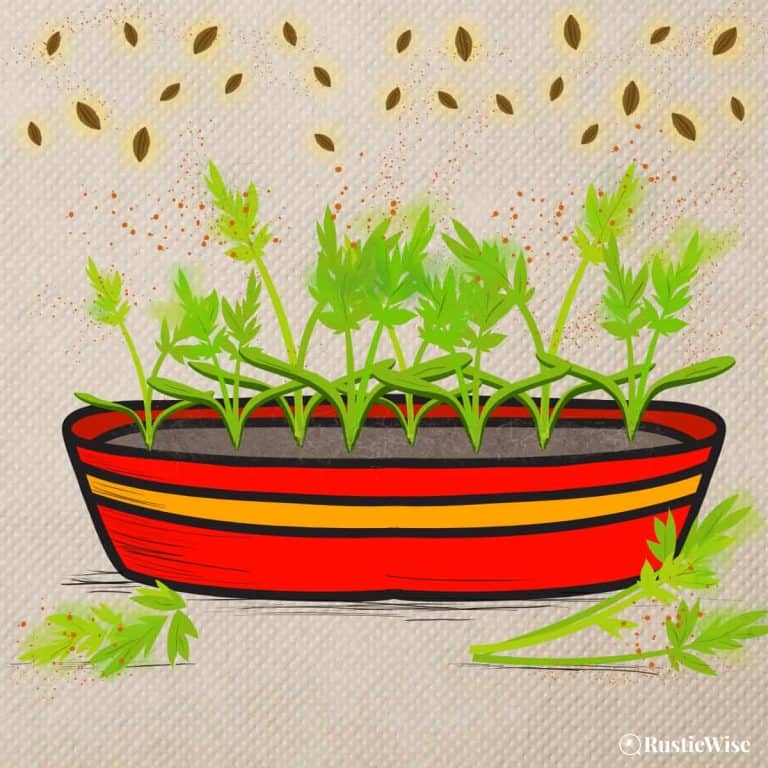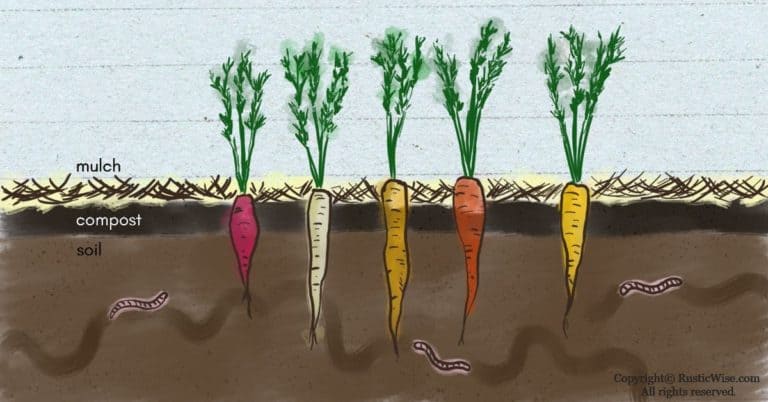Can You Compost Avocado? Here’s a Trick You Need To Know
Avocado is a healthy fruit packed with healthy omega-3s. After you’ve made guacamole or avocado toast, can you compost avocado? Yes, you can compost avocado. However, the flesh, rinds, and pit decompose at different rates so you’ll want to cut up the rind, and break down the pit before tossing it in the compost bin. Avocados are a “green” compost ingredient rich in nitrogen.
If you’re a gardener, then you know that one of the best ways to improve soil quality is by composting. By diverting kitchen scraps, yard clippings, and other organic waste from landfills, you get a nutrient-rich soil amendment in return—a win-win!
So if you find yourself with plenty of leftover avocado scraps, halt before tossing it in the trash. The nutrients from avocado make a great addition to your compost pile. Let’s take a closer look at composting avocado.
Parts of an avocado to compost
Let’s take a look at the different components that make up this superfood: the flesh, the skin (or rind), and the seed. All parts of an avocado can be composted (albeit with a few extra steps for the rind and seed).
How avocado contributes to your compost
While it may not seem like a big deal to throw out that avocado peel and pit, it’s a good idea to compost it instead. Composting food scraps and other organic matter helps keep stuff out of the landfill that could be better used in your garden.
The United States Environmental Protection Agency (EPA) estimates that yard waste and kitchen food scraps comprises over 30 percent of household garbage thrown away. Organic waste in landfills produces harmful methane gas which affects the environment.
If you’re new to composting, in a nutshell, home composting involves breaking down organic waste including kitchen scraps and yard clippings into a nutrient-rich soil amendment. But you can’t just throw out random food scraps into a heap and call it a day.
Effective home composting requires a bit of work and knowledge if you want to avoid unpleasant odors and pests. In order for a backyard compost to work effectively, it needs oxygen, moisture, and a good balance of “green” components as well as “brown” components.
Avocado provides both green and brown components to a compost.
In the composting world, “green” materials are high in nitrogen, which enables the helpful microorganisms in compost to reproduce and grow. Examples of green components are kitchen scraps such as the fleshy part of avocado and fruit peels, as well as young grass clippings, and coffee grounds. Green components break down quickly.
“Brown” materials are a source of carbon which provide long-lasting energy for microorganisms. The tough rind of avocado as well as the seed are brown components. Other examples of brown materials are wood chips, twigs or branches, and newspaper. As you can imagine, these materials take longer to decompose and break down faster if you chop them into smaller pieces.
A general guideline is to provide roughly equal parts green and brown components to a compost to get a good carbon-nitrogen mix (2).
If you “feed” your compost with a steady diet of greens and browns, ensure it stays moist (it should feel like a damp sponge), and turn/mix it regularly to infuse oxygen and water throughout, you’ll have composting success!
When a compost begins to work, it’ll get hot! The hotter a compost gets, the faster compost ingredients break down. Larger compost piles are able to generate more heat.
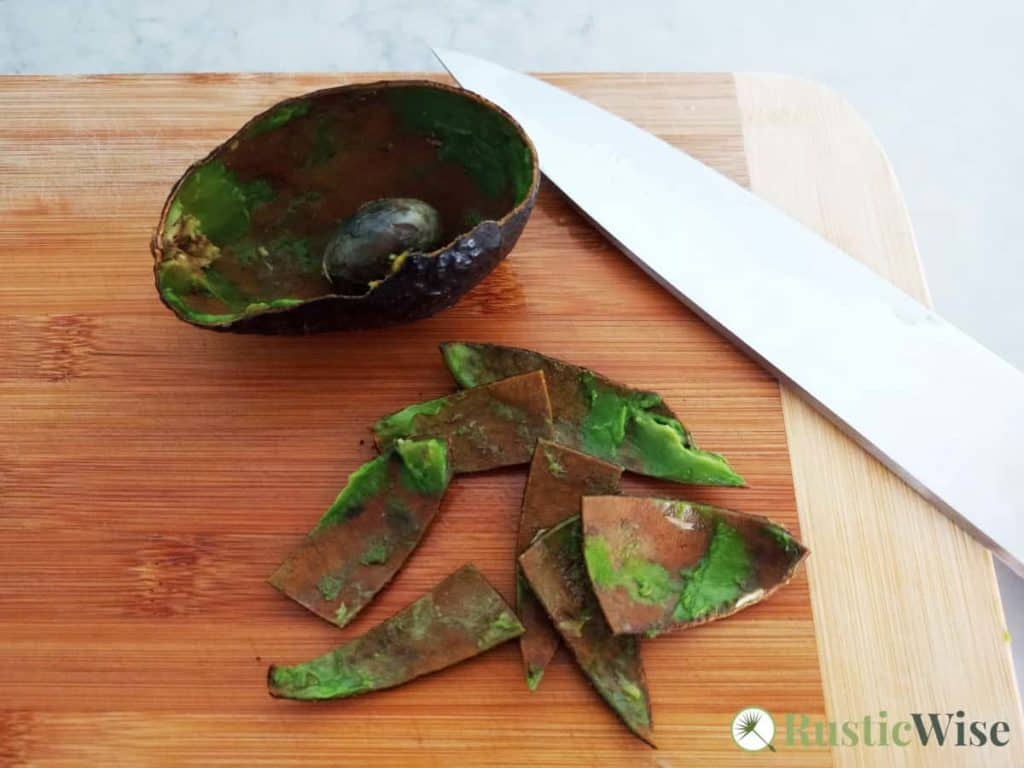
How to compost avocado (helpful tricks)
Now that you know how composting works, how exactly can you compost avocado?
First, remember to peel off any produce stickers as these aren’t biodegradable. Next, it’s best if you don’t throw in a whole avocado, but instead break it down further which we’ll go over below.
How to compost avocado flesh
If you have an avocado or two that has gone mushy and brown (such a shame!), you can scrape out the green flesh and add it with other “green” kitchen scraps like banana peels, apple cores, and coffee grounds.
How to compost avocado skin
Once you’ve scraped out the flesh, you’re left with the tough outer rind. Since the skin takes longer to decompose (which affects your compost’s rate of decomposition), it’s best to cut the rind into smaller chunks.
Tip: Avocado skin will eventually decompose in a compost, but it will decompose a lot quicker if you cut it up and incorporate it well with other brown composting materials.
How to compost avocado seed
An avocado seed is one tough cookie. As a “brown” compost ingredient, it will sit there intact for months if not broken down. While this isn’t a huge problem if you’re not in a rush, others may want to produce finished compost quickly.
The best way to compost an avocado seed is to break it down. There are a couple ways to do this:
- Smash it with a hammer: This is the quickest, and probably most fun method—take your anger out on an avocado seed before tossing it in the compost bin.
- Grind it up with a blender: A strong blender such as a Vitamix or Ninja is able to grind the seed into a fine pulp. You can then mix it with other brown components of your compost pile.
Tip: To speed up the composting process, you can bury avocado seeds and rinds in the center of the compost pile. This area is typically where most of the action takes place and is the warmest spot.
Can you add avocado to a worm bin?
If you have a vermicompost, you’ll be happy to know that yes, worms love the fleshy part of avocado. Plus, it’s a good source of vitamins and nutrients for your wiggly friends. You can also throw in the skins, although it’s a good idea to cut them into smaller bite-size pieces first.
Conclusion: can you compost avocado?
Avocados are a superfood, so it’s not surprising if you have a few in your kitchen. Once you’ve made your favorite guacamole recipe or indulged in some delicious avocado toast, don’t throw the entire thing away—you can compost avocados too! There are three parts of the fruit that will decompose at different rates, so make sure to cut up the rind, and grind or smash the pit before tossing them into your compost bin.
Related questions
Can you eat avocado pits?
There’s some debate whether avocado seeds are safe to eat. Avocado seeds are a source of healthy fatty acids, some dietary fiber, a dash of protein, and a range of phytochemicals. While some people regularly grind it up and use it in smoothies or juices, it’s currently not recommended by health experts to eat avocado seeds. Studies done on rats and mice show that avocado seeds are harmful when consumed in high doses; rats displayed unhealthy fat buildup in their livers from avocado seed oil. More studies need to be done to determine if avocado seeds are safe for human consumption.
What is the bokashi method of composting?
Bokashi is a form of composting which relies on fermentation rather than decomposition. Food scraps are placed in an enclosed bin (anaerobic conditions) where the fermentation process is kicked off with a type of fermentation starter of bran with Lactobacilli. You can add dairy and meat to a bokashi bin—items which you normally wouldn’t add to a regular compost bin.

References
- United States Environmental Protection Agency (EPA), Composting At Home, https://www.epa.gov/recycle/composting-home. Accessed June 2021.
- Foster, Clare (2014). Compost: How to make and use organic compost to transform your garden. Mitchell Beazley. ISBN 978-1-84533-895-4.
- Government of Western Australia, Worm Farms, https://www.agric.wa.gov.au/worm-farms?page=0%2C1. Accessed June 2021.
- O’Brien, Sharon, “Is It Safe and Healthy to Eat the Seed of an Avocado,” Healthline. Accessed June 2021.

Author: Josh Tesolin
Josh is co-founder of RusticWise. When he’s not tinkering in the garden, or fixing something around the house, you can find him working on a vast array of random side projects.

